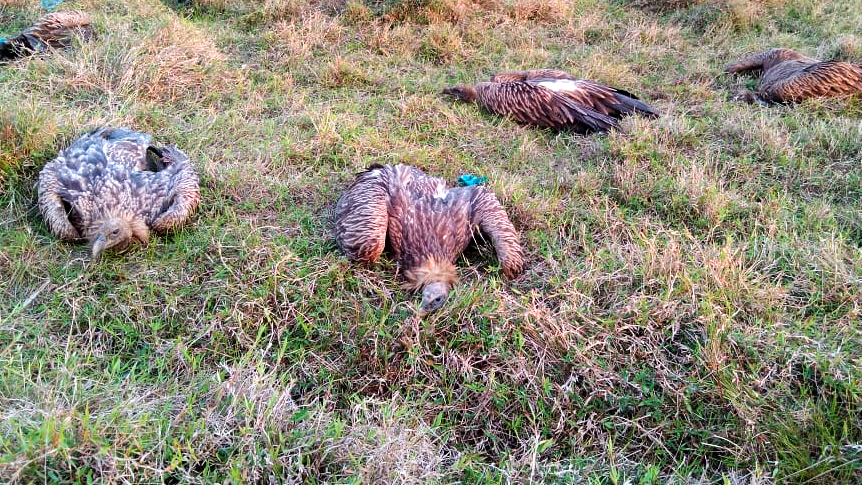Centre for Wildlife Rehabilitation and Conservation - India
Near Kaziranga National Park, animals are being threatened by a single highwayvultures poisoned in India recover and take flight back to the wild
vultures poisoned in India recover and take flight back to the wild

During my inaugural visit to India this month, I witnessed six vultures spread their massive wings in flight back to the wild near Jorhat in Assam, a state in northern India. The release was hosted by Dr. Samshul Ali, centre manager and wildlife veterinarian at the IFAW-Wildlife Trust of India (WTI) Centre for Wildlife Rehabilitation and Conservation (CWRC) and witnessed by the Assam Department of Environment and Forests. The vultures had all survived a horrific poisoning that nearly took their lives.
It all began when community members in Assam placed a poisoned carcass out in hopes of killing stray dogs and other predators living nearby. Instead, they unintentionally poisoned several Himalayan and slender-billed vultures, leaving them in pain and in need of emergency care. It was a clear case of unintended consequences!
Luckily, when people in the community noticed the suffering birds, they quickly alerted the IFAW-WTI mobile veterinary unit—a testament to the trust vested in our team. Our team responded and provided emergency veterinary treatment to the vultures, then transported them to CWRC. Unfortunately, one died while in care at CWRC.
After weeks of rehabilitation, the veterinary team examined the surviving six vultures and determined they were healthy and ready for release back to the wild.
I stood alongside the release truck as the team prepared to open the transport vehicle and proudly watched as the vultures took flight.
vultures dying at an alarming rate
Each of these raptors has a key role to play in sustaining and growing vulture populations in Assam. Since the 1990s, vulture populations have declined by an estimated 97% across India and are categorized as Near Threatened to Critically Endangered in the IUCN Red List of Threatened Species. These birds of prey help control the spread of disease, particularly in Assam where people, community animals, and wildlife live in close proximity.
Research indicates the primary causes for the decline of vulture populations in south Asia are poisoning incidents, pesticides, and livestock medications such as diclofenac, which causes kidney failure in vultures and is cited a leading cause of death in species throughout south Asia.
Since 2003, CWRC has responded to 360 cases of vultures in distress. We have released 218 back to the wild. More than half these vultures required veterinary care because they had been poisoned.

working together to help vultures thrive
In 2021, following the death of 13 Himalayan vultures, IFAW-WTI convened several veterinary and pesticide companies in Assam to discuss a possible solution for vulture mortalities in the state. Local research and surveys found that several drugs used in cattle farming and agriculture (diclofenac, flunixin, ketoprofen, aceclofenac, and carbamates) were likely the root cause of the vulture deaths.
Some of these drugs are banned in India yet continue to be used by farmers to protect their livestock and crops.
Incredibly, two key attendees—the Pesticide Dealer’s Association and Jalpaiguri Drugs Association—pledged to stop selling several of the drugs impacting vulture populations and supported completely banning some of the medications.
Our teams working in Assam will continue to have an open dialogue with communities, alerting them to how important vultures are to our ecosystems and how they can help their populations recover.
The moments that make me proudest are when we bring together communities and industries to make a lasting change so animals can thrive in the wild.
Related content
Every problem has a solution, every solution needs support.
The problems we face are urgent, complicated, and resistant to change. Real solutions demand creativity, hard work, and involvement from people like you.